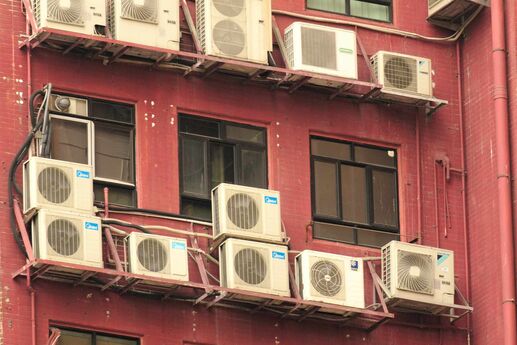
Thanks to her extensive research on the isothermal qualities of porridge, there’s little doubt Goldilocks would have made an excellent air conditioning consultant. Too small a window unit would have left her a sweltering mess. Too large a unit might have resulted in a damp chill. Goldie would have accepted only an air conditioner that was just right.
Most modern homes are equipped with central air, but window air conditioners still command a large share of the cooling market: 6.5 million were sold in 2012 alone. They’re the perfect solution for lowering the temperature in small rooms unconnected to a central cooling system. They’re equally popular among people with older homes who don’t wish to spend a fortune on the construction, electrical overhaul and ductwork needed for central air.
Decisions, decisions
Two factors usually figure into the choice of an air conditioning system. The first is the size of the room to be cooled. The second is the BTU (British thermal unit) rating of the air conditioner. A BTU is defined as the amount of energy needed to either raise or lower a gallon of water by one degree Fahrenheit. An air conditioner with a 12,000 BTU rating puts out more cold air and cools a larger space than a 5,000 BTU model. It also has a much heftier price tag. Comfort rarely comes cheap.
Calculating your needs
To determine how many BTUs you need to cool a room, multiply its width by its length. Multiply that number—the room’s square footage—by 35. The resulting figure is the BTU rating for optimum cooling.
Reduce that result by 10 percent if the room is shaded; add 10 percent if the room receives direct sun. If your AC is in the kitchen—and assuming you actually use your oven—add 4,000 BTUs.
If you truly hate math, the following table will help:
| 100–150 square feet | 5,000 BTUs |
| 150–250 square feet | 6,000 BTUs |
| 250–300 square feet | 7,000 BTUs |
| 300–350 square feet | 8,000 BTUs |
| 350–400 square feet | 9,000 BTUs |
| 400–450 square feet | 10,000 BTUs |
| 450–550 square feet | 12,000 BTUs |
| 550–700 square feet | 14,000 BTUs |
| 700–1,000 square feet | 18,000 BTUs |
| 1,000–1,400 square feet | 24,000 BTUs |
Options and prices
Traditional window units are available in all sizes and powers. They’re generally designed to fit sash-style windows, and range from around $100 for a 5,000 BTU model to more than $1,000 for the 24,000 BTU option. Weight is another factor to consider. The smallest units are generally less than 50 pounds and can be installed by one person. The largest weigh more than 200 pounds, requiring professional installation, a group of friends, or a well-trained gorilla.
A wall unit air conditioner is the same as a window air conditioner in terms of operation, but the blower and controls are flush with the interior wall. A hole is cut through an exterior wall, a metal sleeve is inserted, and the AC is bolted in place.
A third option is the ductless mini-split system. This type of AC features a condenser unit mounted outside your home, with blowers situated in various rooms. Unlike a central-air system, ductwork is not required. Refrigeration lines run directly from the condenser to each blower, requiring only a few small holes in exterior walls.
The advantages of the mini-split system are that each blower can be controlled independently or turned off entirely. Further, AC experts say the mini-split is very efficient, and operates at a noise level equivalent to the fan on your computer. The downside is that the systems cost from $2,000 to $5,000 per 1,000 square feet.
